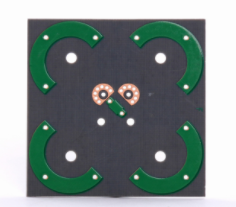The reasons and treatment methods of PCBA processing tin beads: 1. The selection of PCBA processing solder paste directly affects the quality of soldering. The metal content in the solder paste, the degree of oxidation of the metal powder, and the size of the metal powder can all affect the production of the tin beads. 1. The metal content of the solder paste The mass ratio of the metal content in the solder paste is about 88% to 92%, and the volume ratio is about 50%. When the metal content increases, the viscosity of the solder paste increases, which can effectively resist the force generated by vaporization during the preheating process. The increase of the metal content makes the metal powder arranged tightly, making it easier to combine and not be blown away when melting. In addition, the increase in metal content may also reduce the "collapse" of the solder paste after printing, so it is not easy to produce solder beads. 2. Oxidation degree of the metal powder of the solder paste The higher the oxidation degree of the metal powder in the solder paste, the greater the resistance of the metal powder during soldering, and the solder paste is not easy to infiltrate between the pad and the components, resulting in solderability reduce.

Experiments show that the incidence of tin beads is directly proportional to the degree of oxidation of the metal powder. Generally, the oxidation degree of the solder in the solder paste is controlled below 0.05%, and the maximum limit is 0.15% 3. The size of the metal powder in the solder paste The smaller the particle size of the metal powder in the solder paste, the larger the overall surface area of the solder paste, which leads to The finer powder has a higher degree of oxidation, which intensifies the phenomenon of solder beading. Experiments have proved that when using finer-particle solder paste, solder beads are more likely to be produced. 4. Too much flux in the solder paste and too much active flux of the solder will cause partial collapse of the solder paste, which will make the solder balls easy to produce. In addition, when the activity of the flux is too weak, the ability to remove oxidation is weak, and it is easier to produce tin beads. 5. Other precautions After the solder paste is taken out of the refrigerator, it is opened for use without reheating, causing the solder paste to absorb moisture, and the solder paste splashes during preheating to produce tin beads; the PCB is damp, the indoor humidity is too heavy, and the wind is facing Solder paste blowing, excessive thinner added to the solder paste, excessive machine mixing time, etc. will promote the production of tin beads. Causes and treatment methods of tin beads in PCBA processing. 2. The production and opening of PCBA processing stencil 1. The opening of the stencil. We generally open the stencil according to the size of the pad. When printing solder paste, it is easy to print the solder paste on the solder mask, so that during reflow soldering Produce tin beads. Therefore, we open the stencil like this, the opening of the stencil is 10% smaller than the actual size of the pad, and the shape of the opening can be changed to achieve the desired effect. 2. The thickness of the steel mesh Baidu is generally between 0.12~0.17mm. Too thick will cause the "collapse" of the solder paste, resulting in tin balls. 3. The mounting pressure of the PCBA processing chip placement machine If the pressure is too high during mounting, the solder paste will easily be squeezed onto the solder mask under the component, and the solder paste will melt and run around the component to form tin beads during reflow soldering. . Solution: reduce the mounting pressure; use a suitable stencil opening form to prevent the solder paste from being squeezed out of the pad. 4. Setting the temperature curve of PCBA processing furnace. Tin beads are produced during reflow soldering. In the preheating stage, the temperature of the solder paste, PCB components must be increased to 120~150 degree Celsius, and the thermal shock of the components during reflow must be reduced. At this stage, the flux in the solder paste begins to vaporize, thereby causing small particles The metal powder separates and runs to the bottom of the component, and when the flow is added, it runs around the component to form tin beads. At this stage, the temperature should not rise too fast, generally should be less than 2.5°C/S. Too fast can easily cause solder spatter and form tin beads. Therefore, the preheating temperature and the preheating speed of reflow soldering should be adjusted to control the production of tin beads.